LM234 Current Source: Pinout, 3D Model and Datasheet
8 Terminations 8 Pin LM234 Current regulator 1 Outputs -25°C~100°C Min 1V Max 40V









8 Terminations 8 Pin LM234 Current regulator 1 Outputs -25°C~100°C Min 1V Max 40V
The LM234 is a 3-terminal adjustable Current Source characterized by an operating current range of 10000:1, an excellent current regulation, a wide dynamic voltage range of 1V to 10V. Furthermore, Huge range of Semiconductors, Capacitors, Resistors and IcS in stock. Welcome RFQ.
LM234 Pinout

Pinout
LM234 CAD Model
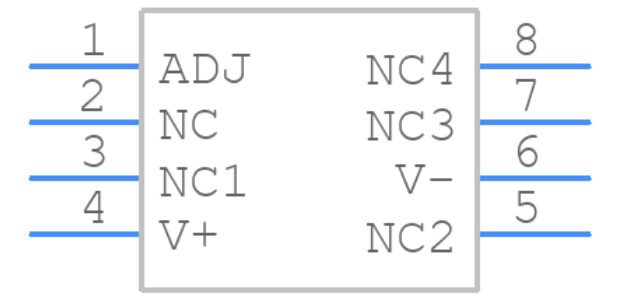
symbol

footprint
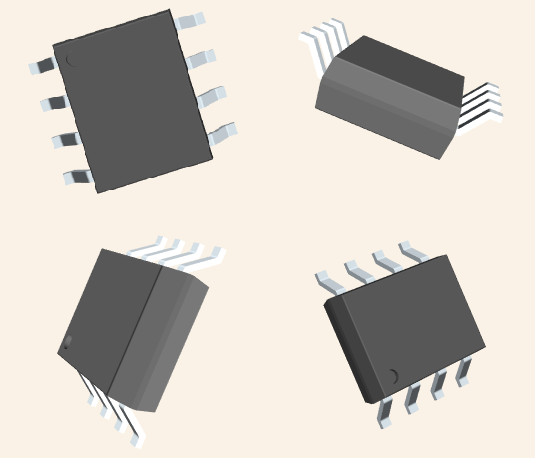
3D Model
LM234 Overview
The LM234 is a 3-terminal adjustable current source characterized by an operating current range of 10000:1, an excellent current regulation, a wide dynamic voltage range of 1V to 10V. The current is determined by an external resistor without requiring other external components. Reverse voltages of up to 20V will only draw a current of several microamperes. This enables the circuit to operate as a rectifier and as a source of current in a.c. applications. For the LM234, the voltage on the control pin is 64mV at +25°C and is directly proportional to the absolute temperature (°K). The simplest external resistor connection generates a current with approximately 0.33%/°C temperature dependence. Zero drift can be obtained by adding an additional resistor and a diode to the external circuit.
This article provides you with a basic overview of the LM234, including its pin descriptions, features and specifications, etc., to help you quickly understand what LM234 is.
LM234 Features
• Operates from 1V to 40V
• 0.02%/V current regulation
• Programmable from 1µA to 10mA
• ±3% initial accuracy
Specifications
- TypeParameter
- Lifecycle Status
Lifecycle Status refers to the current stage of an electronic component in its product life cycle, indicating whether it is active, obsolete, or transitioning between these states. An active status means the component is in production and available for purchase. An obsolete status indicates that the component is no longer being manufactured or supported, and manufacturers typically provide a limited time frame for support. Understanding the lifecycle status is crucial for design engineers to ensure continuity and reliability in their projects.
ACTIVE (Last Updated: 7 months ago) - Factory Lead Time10 Weeks
- Mount
In electronic components, the term "Mount" typically refers to the method or process of physically attaching or fixing a component onto a circuit board or other electronic device. This can involve soldering, adhesive bonding, or other techniques to secure the component in place. The mounting process is crucial for ensuring proper electrical connections and mechanical stability within the electronic system. Different components may have specific mounting requirements based on their size, shape, and function, and manufacturers provide guidelines for proper mounting procedures to ensure optimal performance and reliability of the electronic device.
Surface Mount - Mounting Type
The "Mounting Type" in electronic components refers to the method used to attach or connect a component to a circuit board or other substrate, such as through-hole, surface-mount, or panel mount.
Surface Mount - Package / Case
refers to the protective housing that encases an electronic component, providing mechanical support, electrical connections, and thermal management.
8-SOIC (0.154, 3.90mm Width) - Number of Pins8
- Weight4.535924g
- Operating Temperature
The operating temperature is the range of ambient temperature within which a power supply, or any other electrical equipment, operate in. This ranges from a minimum operating temperature, to a peak or maximum operating temperature, outside which, the power supply may fail.
-25°C~100°C - Packaging
Semiconductor package is a carrier / shell used to contain and cover one or more semiconductor components or integrated circuits. The material of the shell can be metal, plastic, glass or ceramic.
Tape & Reel (TR) - JESD-609 Code
The "JESD-609 Code" in electronic components refers to a standardized marking code that indicates the lead-free solder composition and finish of electronic components for compliance with environmental regulations.
e4 - Part Status
Parts can have many statuses as they progress through the configuration, analysis, review, and approval stages.
Active - Moisture Sensitivity Level (MSL)
Moisture Sensitivity Level (MSL) is a standardized rating that indicates the susceptibility of electronic components, particularly semiconductors, to moisture-induced damage during storage and the soldering process, defining the allowable exposure time to ambient conditions before they require special handling or baking to prevent failures
1 (Unlimited) - Number of Terminations8
- ECCN Code
An ECCN (Export Control Classification Number) is an alphanumeric code used by the U.S. Bureau of Industry and Security to identify and categorize electronic components and other dual-use items that may require an export license based on their technical characteristics and potential for military use.
EAR99 - Temperature Coefficient
The resistance-change factor per degree Celsius of temperature change is called the temperature coefficient of resistance. This factor is represented by the Greek lower-case letter “alpha” (α). A positive coefficient for a material means that its resistance increases with an increase in temperature.
33 ppm/°C - Terminal Finish
Terminal Finish refers to the surface treatment applied to the terminals or leads of electronic components to enhance their performance and longevity. It can improve solderability, corrosion resistance, and overall reliability of the connection in electronic assemblies. Common finishes include nickel, gold, and tin, each possessing distinct properties suitable for various applications. The choice of terminal finish can significantly impact the durability and effectiveness of electronic devices.
Nickel/Palladium/Gold (Ni/Pd/Au) - Max Power Dissipation
The maximum power that the MOSFET can dissipate continuously under the specified thermal conditions.
400mW - Terminal Position
In electronic components, the term "Terminal Position" refers to the physical location of the connection points on the component where external electrical connections can be made. These connection points, known as terminals, are typically used to attach wires, leads, or other components to the main body of the electronic component. The terminal position is important for ensuring proper connectivity and functionality of the component within a circuit. It is often specified in technical datasheets or component specifications to help designers and engineers understand how to properly integrate the component into their circuit designs.
DUAL - Terminal Form
Occurring at or forming the end of a series, succession, or the like; closing; concluding.
GULL WING - Peak Reflow Temperature (Cel)
Peak Reflow Temperature (Cel) is a parameter that specifies the maximum temperature at which an electronic component can be exposed during the reflow soldering process. Reflow soldering is a common method used to attach electronic components to a circuit board. The Peak Reflow Temperature is crucial because it ensures that the component is not damaged or degraded during the soldering process. Exceeding the specified Peak Reflow Temperature can lead to issues such as component failure, reduced performance, or even permanent damage to the component. It is important for manufacturers and assemblers to adhere to the recommended Peak Reflow Temperature to ensure the reliability and functionality of the electronic components.
260 - Time@Peak Reflow Temperature-Max (s)
Time@Peak Reflow Temperature-Max (s) refers to the maximum duration that an electronic component can be exposed to the peak reflow temperature during the soldering process, which is crucial for ensuring reliable solder joint formation without damaging the component.
30 - Base Part Number
The "Base Part Number" (BPN) in electronic components serves a similar purpose to the "Base Product Number." It refers to the primary identifier for a component that captures the essential characteristics shared by a group of similar components. The BPN provides a fundamental way to reference a family or series of components without specifying all the variations and specific details.
LM234 - Function
The parameter "Function" in electronic components refers to the specific role or purpose that the component serves within an electronic circuit. It defines how the component interacts with other elements, influences the flow of electrical signals, and contributes to the overall behavior of the system. Functions can include amplification, signal processing, switching, filtering, and energy storage, among others. Understanding the function of each component is essential for designing effective and efficient electronic systems.
Current Source - Number of Outputs1
- Output Type
The "Output Type" parameter in electronic components refers to the type of signal or data that is produced by the component as an output. This parameter specifies the nature of the output signal, such as analog or digital, and can also include details about the voltage levels, current levels, frequency, and other characteristics of the output signal. Understanding the output type of a component is crucial for ensuring compatibility with other components in a circuit or system, as well as for determining how the output signal can be utilized or processed further. In summary, the output type parameter provides essential information about the nature of the signal that is generated by the electronic component as its output.
Analog - Max Output Current
The maximum current that can be supplied to the load.
10mA - Max Supply Voltage
In general, the absolute maximum common-mode voltage is VEE-0.3V and VCC+0.3V, but for products without a protection element at the VCC side, voltages up to the absolute maximum rated supply voltage (i.e. VEE+36V) can be supplied, regardless of supply voltage.
40V - Min Supply Voltage
The minimum supply voltage (V min ) is explored for sequential logic circuits by statistically simulating the impact of within-die process variations and gate-dielectric soft breakdown on data retention and hold time.
1V - Operating Supply Current
Operating Supply Current, also known as supply current or quiescent current, is a crucial parameter in electronic components that indicates the amount of current required for the device to operate under normal conditions. It represents the current drawn by the component from the power supply while it is functioning. This parameter is important for determining the power consumption of the component and is typically specified in datasheets to help designers calculate the overall power requirements of their circuits. Understanding the operating supply current is essential for ensuring proper functionality and efficiency of electronic systems.
10mA - Accuracy
Accuracy in electronic components refers to the degree to which a measured value agrees with the true or accepted value. It evaluates the precision of a component in providing correct output or measurement under specified conditions. High accuracy indicates minimal deviation from the actual value, while low accuracy shows significant error in measurement. This parameter is crucial in applications where precise data is essential for reliable performance and decision-making.
±3% - Max Input Voltage
Max Input Voltage refers to the maximum voltage level that an electronic component can safely handle without getting damaged. This parameter is crucial for ensuring the proper functioning and longevity of the component. Exceeding the specified maximum input voltage can lead to overheating, electrical breakdown, or permanent damage to the component. It is important to carefully adhere to the manufacturer's guidelines regarding the maximum input voltage to prevent any potential issues and maintain the reliability of the electronic device.
40V - Reference Type
a code object that is not stored directly where it is created, but that acts as a kind of pointer to a value stored elsewhere.
Adjustable - Forward Voltage
the amount of voltage needed to get current to flow across a diode.
40V - Ambient Temperature Range High
This varies from person to person, but it is somewhere between 68 and 77 degrees F on average. The temperature setting that is comfortable for an individual may fluctuate with humidity and outside temperature as well. The temperature of an air conditioned room can also be considered ambient temperature.
100°C - Height1.75mm
- Length4.9mm
- Width3.9mm
- REACH SVHC
The parameter "REACH SVHC" in electronic components refers to the compliance with the Registration, Evaluation, Authorization, and Restriction of Chemicals (REACH) regulation regarding Substances of Very High Concern (SVHC). SVHCs are substances that may have serious effects on human health or the environment, and their use is regulated under REACH to ensure their safe handling and minimize their impact.Manufacturers of electronic components need to declare if their products contain any SVHCs above a certain threshold concentration and provide information on the safe use of these substances. This information allows customers to make informed decisions about the potential risks associated with using the components and take appropriate measures to mitigate any hazards.Ensuring compliance with REACH SVHC requirements is essential for electronics manufacturers to meet regulatory standards, protect human health and the environment, and maintain transparency in their supply chain. It also demonstrates a commitment to sustainability and responsible manufacturing practices in the electronics industry.
No SVHC - Radiation Hardening
Radiation hardening is the process of making electronic components and circuits resistant to damage or malfunction caused by high levels of ionizing radiation, especially for environments in outer space (especially beyond the low Earth orbit), around nuclear reactors and particle accelerators, or during nuclear accidents or nuclear warfare.
No - RoHS Status
RoHS means “Restriction of Certain Hazardous Substances” in the “Hazardous Substances Directive” in electrical and electronic equipment.
ROHS3 Compliant - Lead Free
Lead Free is a term used to describe electronic components that do not contain lead as part of their composition. Lead is a toxic material that can have harmful effects on human health and the environment, so the electronics industry has been moving towards lead-free components to reduce these risks. Lead-free components are typically made using alternative materials such as silver, copper, and tin. Manufacturers must comply with regulations such as the Restriction of Hazardous Substances (RoHS) directive to ensure that their products are lead-free and environmentally friendly.
Lead Free
LM234 Functional Block Diagram

Schematic diagram
LM234 Equivalent
LM234D, Three Terminal Adjustable Current Source, Manufacturer is STMicroelectronics.
Parts with Similar Specs
- ImagePart NumberManufacturerPackage / CaseNumber of PinsNumber of TerminationsMountMin Supply VoltageLead FreeTerminal FormSubcategoryView Compare
LM234DT
8-SOIC (0.154, 3.90mm Width)
8
8
Surface Mount
1 V
Lead Free
GULL WING
Power Management Circuits
8-SOIC (0.154, 3.90mm Width)
8
8
Surface Mount
1 V
Lead Free
GULL WING
Power Management Circuits
8-SOIC (0.154, 3.90mm Width)
8
8
Surface Mount
1 V
Lead Free
GULL WING
Power Management Circuits
8-SOIC (0.154, 3.90mm Width)
8
8
Surface Mount
1 V
Lead Free
GULL WING
Power Management Circuits
8-SOIC (0.154, 3.90mm Width)
8
8
Surface Mount
1 V
Lead Free
GULL WING
Power Management Circuits
LM234 Application
• Computers
• Controllers
• Intelligent instruments
LM234 Package

package

mechanical data
LM234 Manufacturer
STMicroelectronics is a globally recognized semiconductor company. They are dedicated to developing semiconductor solutions for various microelectronics applications. STMicroelectronics enjoys unrivaled silicon and system expertise, strong manufacturing strength, IP portfolio,and solid relationships with their strategic partners. Based on these advantages, STMicroelectronics has become a pioneer in System-on-Chip (SoC) technology and its products has a positive effect in realizing today's convergence trends.
Datasheet PDF
- Datasheets :
Trend Analysis
What is the essential property of the LM234?
The LM234 is a 3-terminal adjustable current source characterized by an operating current range of 10000:1, an excellent current regulation, a wide dynamic voltage range of 1V to 10V.
Is the LM234 an excellent remote control temperature sensor?
The LM234 is excellent remote controlled temperature sensor because its operation as current sources preserves its accuracy even in the case of long connecting wires.
If LM234 were used as the active load of a transistor amplifier, what would happen to the noise at the input?
If the LM234 is used as an active load for a transistor amplifier, the noise at the input will increase by about 12dB.
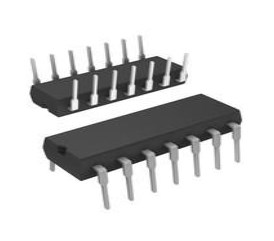 TL074CN: 3MHz,Solder temperature, Pinout and Datasheet
TL074CN: 3MHz,Solder temperature, Pinout and Datasheet21 February 20222886
![DB3 DIAC 36V 0.05mA 2-Pin DO-35[video]: Datasheet, Features, and Applications](https://res.utmel.com/Images/Article/3a7f1099-b47a-4f73-a691-bdaf9b8ced33.jpg) DB3 DIAC 36V 0.05mA 2-Pin DO-35[video]: Datasheet, Features, and Applications
DB3 DIAC 36V 0.05mA 2-Pin DO-35[video]: Datasheet, Features, and Applications11 March 20226231
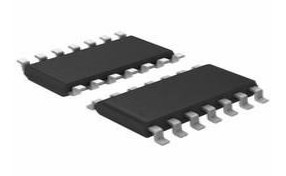 LM2902DG Op-Amp: Pinout, Equivalent and Datasheet
LM2902DG Op-Amp: Pinout, Equivalent and Datasheet06 December 20212402
 TMP36 Temperature Sensors: Pinout, Datasheet and Circuit
TMP36 Temperature Sensors: Pinout, Datasheet and Circuit14 July 202111168
 Arduino Leonardo: Specifications,Documentation and FAQs
Arduino Leonardo: Specifications,Documentation and FAQs06 October 20235558
![D45H11 Bipolar Transistor PNP 80 V 10 A 40MHz[Video]: Datasheet, Pinout, and FAQ](https://res.utmel.com/Images/Article/23dd2def-5d4e-42fa-a2fa-b8f86259f5ef.jpg) D45H11 Bipolar Transistor PNP 80 V 10 A 40MHz[Video]: Datasheet, Pinout, and FAQ
D45H11 Bipolar Transistor PNP 80 V 10 A 40MHz[Video]: Datasheet, Pinout, and FAQ10 March 2022275
 TSAL6100: Datasheet, Footprint and Features
TSAL6100: Datasheet, Footprint and Features15 March 2022876
 LM311D Linear Comparator: Feature, Specification, and Datasheet
LM311D Linear Comparator: Feature, Specification, and Datasheet09 June 20212892
 Switching Regulator Noise: Comprehensive Understanding and Analysis
Switching Regulator Noise: Comprehensive Understanding and Analysis26 February 20222220
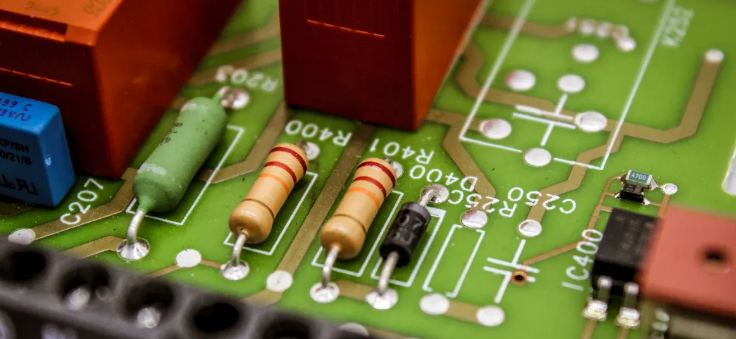 A Complete Guide to Tantalum Capacitors in 2025
A Complete Guide to Tantalum Capacitors in 202510 July 2025679
 Arm's IPO: A New Chapter in Chip Technology
Arm's IPO: A New Chapter in Chip Technology30 August 20232086
 Increasing the Efficiency through Wide-Bandgap Semiconductors (SiC & GaN)
Increasing the Efficiency through Wide-Bandgap Semiconductors (SiC & GaN)24 October 20221076
 What are Quantum Sensors?
What are Quantum Sensors?27 October 20212302
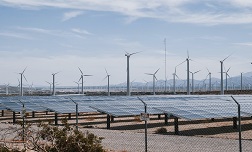 Si vs SiC Diodes: A Performance Study of Interleaved Boost Converters for PV Applications
Si vs SiC Diodes: A Performance Study of Interleaved Boost Converters for PV Applications14 March 20232615
 Characteristics, Types, and Functions of Electrolytic Capacitors
Characteristics, Types, and Functions of Electrolytic Capacitors17 October 20259251
 Rheostat Basics: Types, Principle and Functions
Rheostat Basics: Types, Principle and Functions08 December 202015201
STMicroelectronics
In Stock: 17500
United States
China
Canada
Japan
Russia
Germany
United Kingdom
Singapore
Italy
Hong Kong(China)
Taiwan(China)
France
Korea
Mexico
Netherlands
Malaysia
Austria
Spain
Switzerland
Poland
Thailand
Vietnam
India
United Arab Emirates
Afghanistan
Åland Islands
Albania
Algeria
American Samoa
Andorra
Angola
Anguilla
Antigua & Barbuda
Argentina
Armenia
Aruba
Australia
Azerbaijan
Bahamas
Bahrain
Bangladesh
Barbados
Belarus
Belgium
Belize
Benin
Bermuda
Bhutan
Bolivia
Bonaire, Sint Eustatius and Saba
Bosnia & Herzegovina
Botswana
Brazil
British Indian Ocean Territory
British Virgin Islands
Brunei
Bulgaria
Burkina Faso
Burundi
Cabo Verde
Cambodia
Cameroon
Cayman Islands
Central African Republic
Chad
Chile
Christmas Island
Cocos (Keeling) Islands
Colombia
Comoros
Congo
Congo (DRC)
Cook Islands
Costa Rica
Côte d’Ivoire
Croatia
Cuba
Curaçao
Cyprus
Czechia
Denmark
Djibouti
Dominica
Dominican Republic
Ecuador
Egypt
El Salvador
Equatorial Guinea
Eritrea
Estonia
Eswatini
Ethiopia
Falkland Islands
Faroe Islands
Fiji
Finland
French Guiana
French Polynesia
Gabon
Gambia
Georgia
Ghana
Gibraltar
Greece
Greenland
Grenada
Guadeloupe
Guam
Guatemala
Guernsey
Guinea
Guinea-Bissau
Guyana
Haiti
Honduras
Hungary
Iceland
Indonesia
Iran
Iraq
Ireland
Isle of Man
Israel
Jamaica
Jersey
Jordan
Kazakhstan
Kenya
Kiribati
Kosovo
Kuwait
Kyrgyzstan
Laos
Latvia
Lebanon
Lesotho
Liberia
Libya
Liechtenstein
Lithuania
Luxembourg
Macao(China)
Madagascar
Malawi
Maldives
Mali
Malta
Marshall Islands
Martinique
Mauritania
Mauritius
Mayotte
Micronesia
Moldova
Monaco
Mongolia
Montenegro
Montserrat
Morocco
Mozambique
Myanmar
Namibia
Nauru
Nepal
New Caledonia
New Zealand
Nicaragua
Niger
Nigeria
Niue
Norfolk Island
North Korea
North Macedonia
Northern Mariana Islands
Norway
Oman
Pakistan
Palau
Palestinian Authority
Panama
Papua New Guinea
Paraguay
Peru
Philippines
Pitcairn Islands
Portugal
Puerto Rico
Qatar
Réunion
Romania
Rwanda
Samoa
San Marino
São Tomé & Príncipe
Saudi Arabia
Senegal
Serbia
Seychelles
Sierra Leone
Sint Maarten
Slovakia
Slovenia
Solomon Islands
Somalia
South Africa
South Sudan
Sri Lanka
St Helena, Ascension, Tristan da Cunha
St. Barthélemy
St. Kitts & Nevis
St. Lucia
St. Martin
St. Pierre & Miquelon
St. Vincent & Grenadines
Sudan
Suriname
Svalbard & Jan Mayen
Sweden
Syria
Tajikistan
Tanzania
Timor-Leste
Togo
Tokelau
Tonga
Trinidad & Tobago
Tunisia
Turkey
Turkmenistan
Turks & Caicos Islands
Tuvalu
U.S. Outlying Islands
U.S. Virgin Islands
Uganda
Ukraine
Uruguay
Uzbekistan
Vanuatu
Vatican City
Venezuela
Wallis & Futuna
Yemen
Zambia
Zimbabwe






